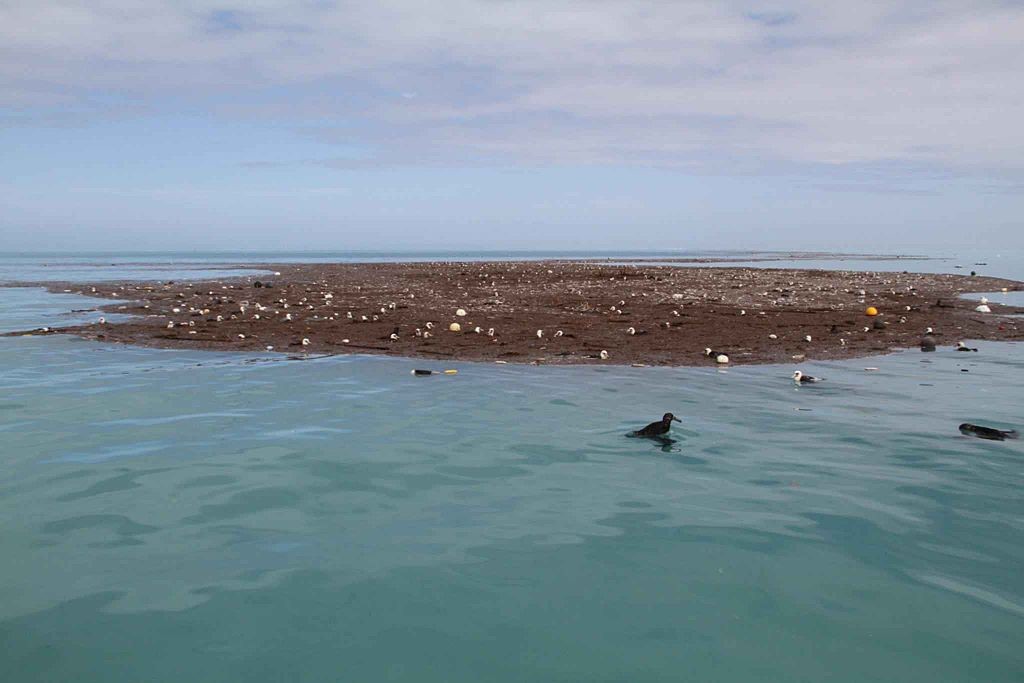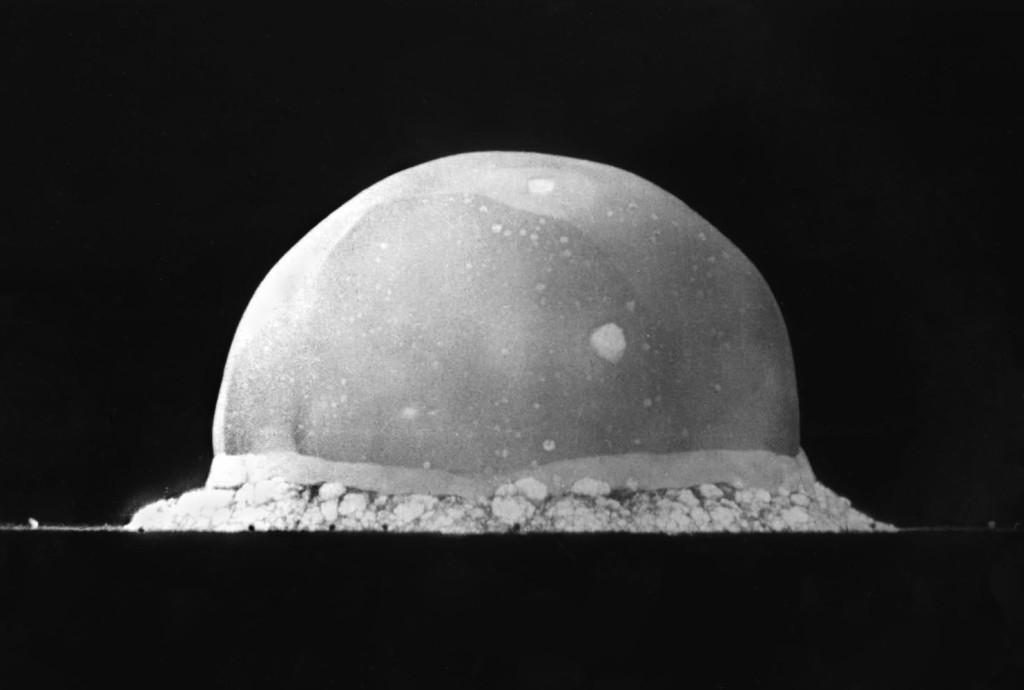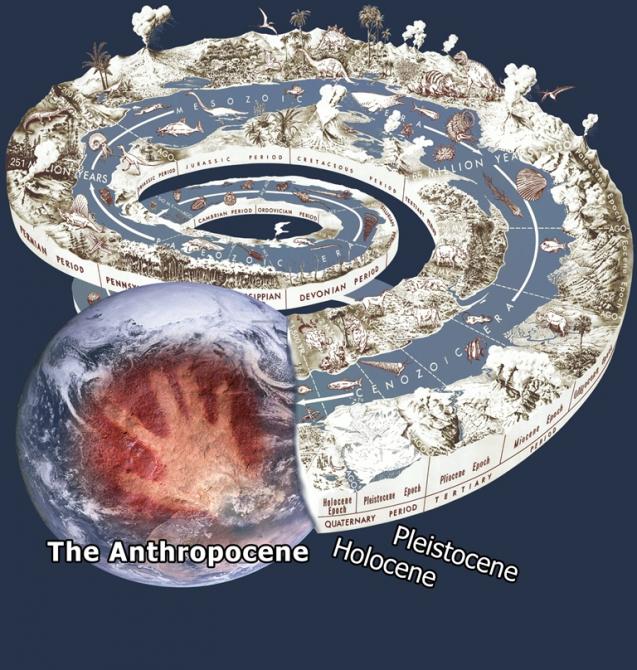
Over millions of years, humans have evolved from loose bands of ape-like hunter-gatherers, sharing one corner of the planet with gazelles, elephants, and other exotic animals, to become a dominant force with the power to shape the Earth’s climate, chemical composition, and geology.
It’s been boom times for humanity for millennia:
- We number in the billions.
- We extensively occupy every continent (save for Antarctica).
- Technology enables us to produce and consume vast amounts of energy and resources (mostly by the liquidation of natural capital).
- The atmosphere and oceans serve as dumps our industrial byproducts.
Our capabilities should come with equivalent responsibilities, but we’re only beginning to understand our impacts on the Earth and our response is lagging (to put it mildly). Whatever solutions we come up with will have to adapt as our population continues to increase and demands for both basic and “luxury” material goods will increase as well.
The clock is ticking…
Defining the “Anthropocene”
In 2000, writing in the International Geosphere-Biosphere Programme’s Global Change Newsletter, atmospheric chemist Paul J. Crutzen and ecologist Eugene F. Stoermer proposed using the term “Anthropocene” to describe the current geological age. They reviewed the physical evidence, including how humans have transformed landscapes through agriculture and building cities, impacts on greenhouse gas concentrations from burning fossil fuels and raising livestock, and species extinctions. They also traced a line of reasoning dating back more than one hundred years that traced humanity as a key force reshaping Earth’s systems.
Although the term hasn’t yet been officially adopted by geological societies, the debate is running hot, even as the evidence mounts. According to a working group of the International Union of Geological Sciences, the “anthropocene” denotes “the present time interval, in which many geologically significant conditions and processes are profoundly altered by human activities.”
Here are a few key signs that humans are now re-shaping the Earth:
1. Artificial materials
From plastics to radioactive compounds, humans have created substances that did not exist before recent historical times. Traces of these substances will remain in the geological record for eons. Meteor impacts have left globally distributed traces of radioactive isotopes–will the era of atomic warhead testing and plastic pollution of the Anthropocene leave similar imprints?
2. Anthropogenically forced (i.e. human-caused) climate change
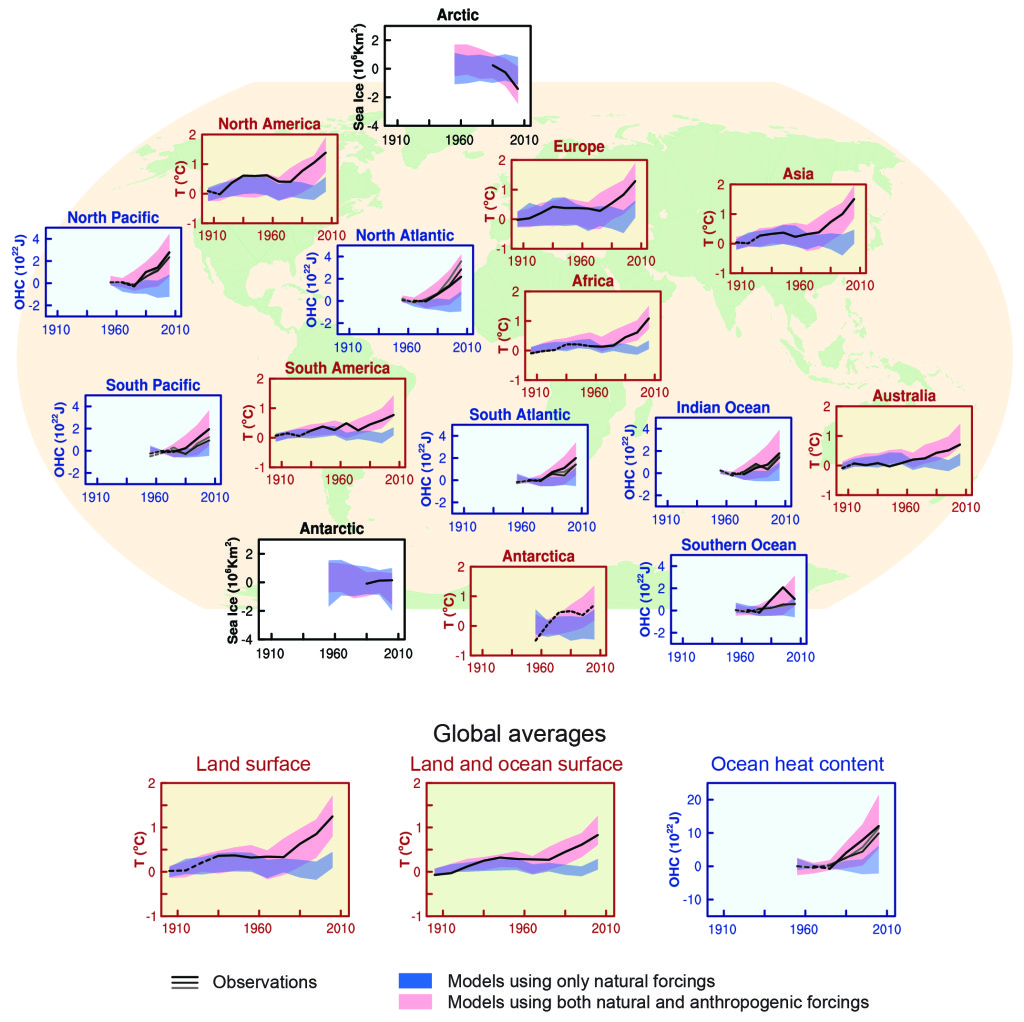
By releasing carbon dioxide, methane, and hydrofluorocarbons into the atmosphere and by damaging terrestrial and marine ecosystems that sequester carbon dioxide, we’re changing the balance of heat globally, causing average temperatures to rise (as shown above). The results are frightening and well documented.
3. Changes to the landscape
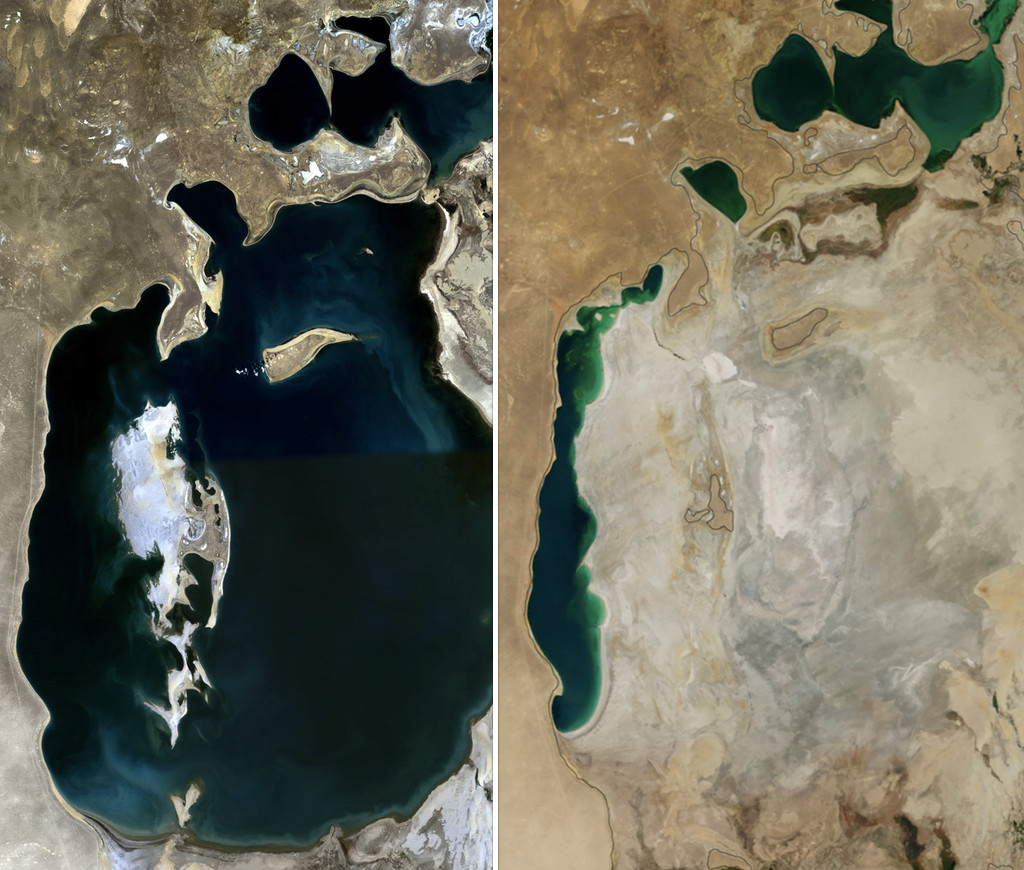
Deforestation, watershed engineering (through the construction of dams, dikes, and canals), and the spread of cities are changing the face of the planet. The ecologies that provide us with food, water, and shelter are being degraded. By most accounts, we face a bleak future.
What are our options?
- Do nothing and be miserable. (Note: misery will NOT be shared equally–those who are likely to suffer the most are the poor, i.e. those least able to adapt to the changing climate.)
- Get on a more sustainable emissions trajectory. This is the mainstream approach that may soon bear fruit after decades of multilateral negotiations and more recent bilateral deals.
- Begin to adapt. We’re locked in to some amount of climate change as a result of historical emissions. “Resilience” will be a new keyword for ecosystems and economics. Also, we should probably all start moving inland.
- Investigate geoengineering responses to climate change. We can start researching large-scale geoengineering projects that could: 1. Reflect sunlight to cool the Earth, a highly speculative proposition, and 2. Sequester carbon dioxide, a feasible and increasingly mainstream consideration. Both of these options are dramatized in my upcoming novel, Anthropocene.
In any case, expect much more debate about our role in re-shaping the Earth and how we sustain ourselves on this little blue orb for the long term.
